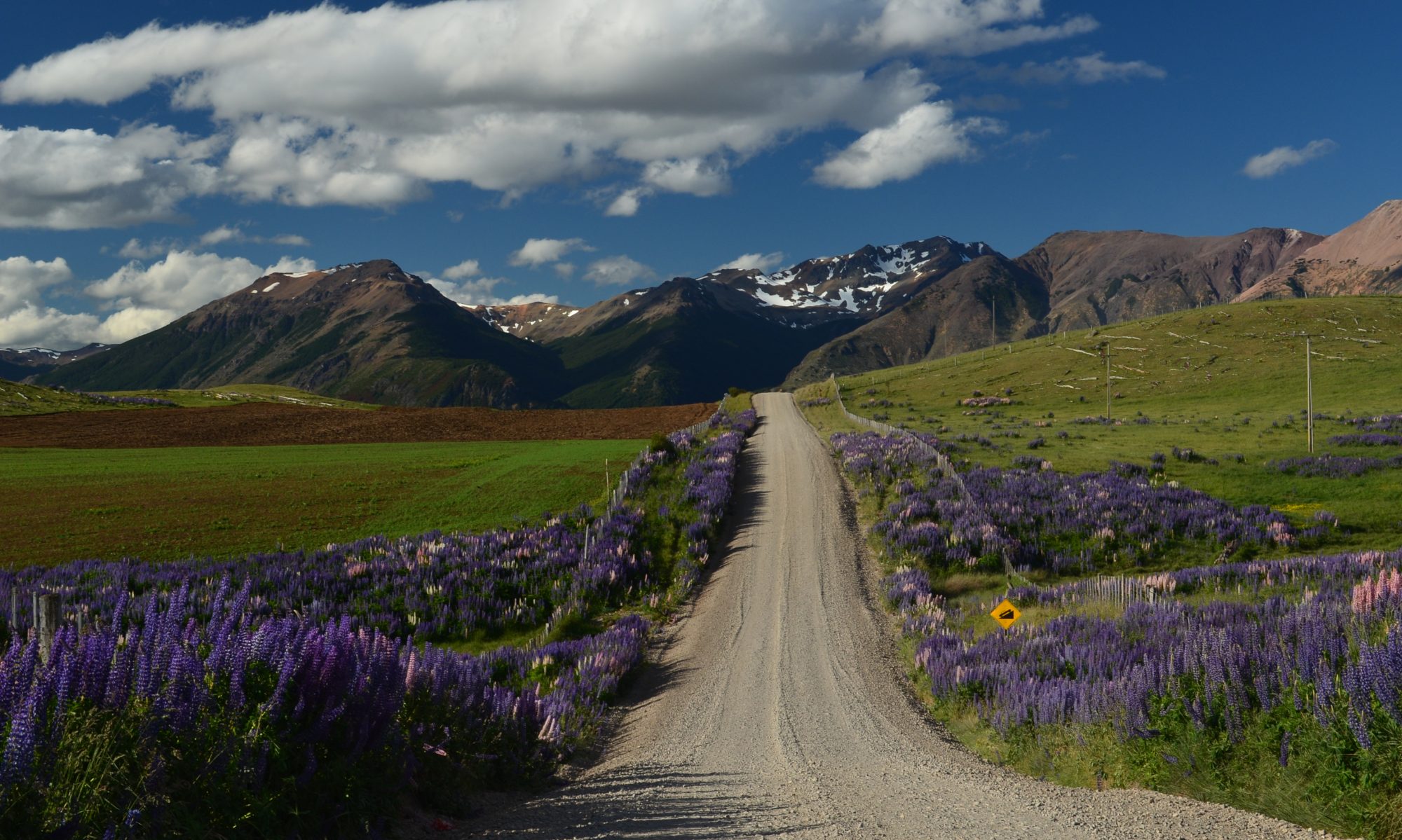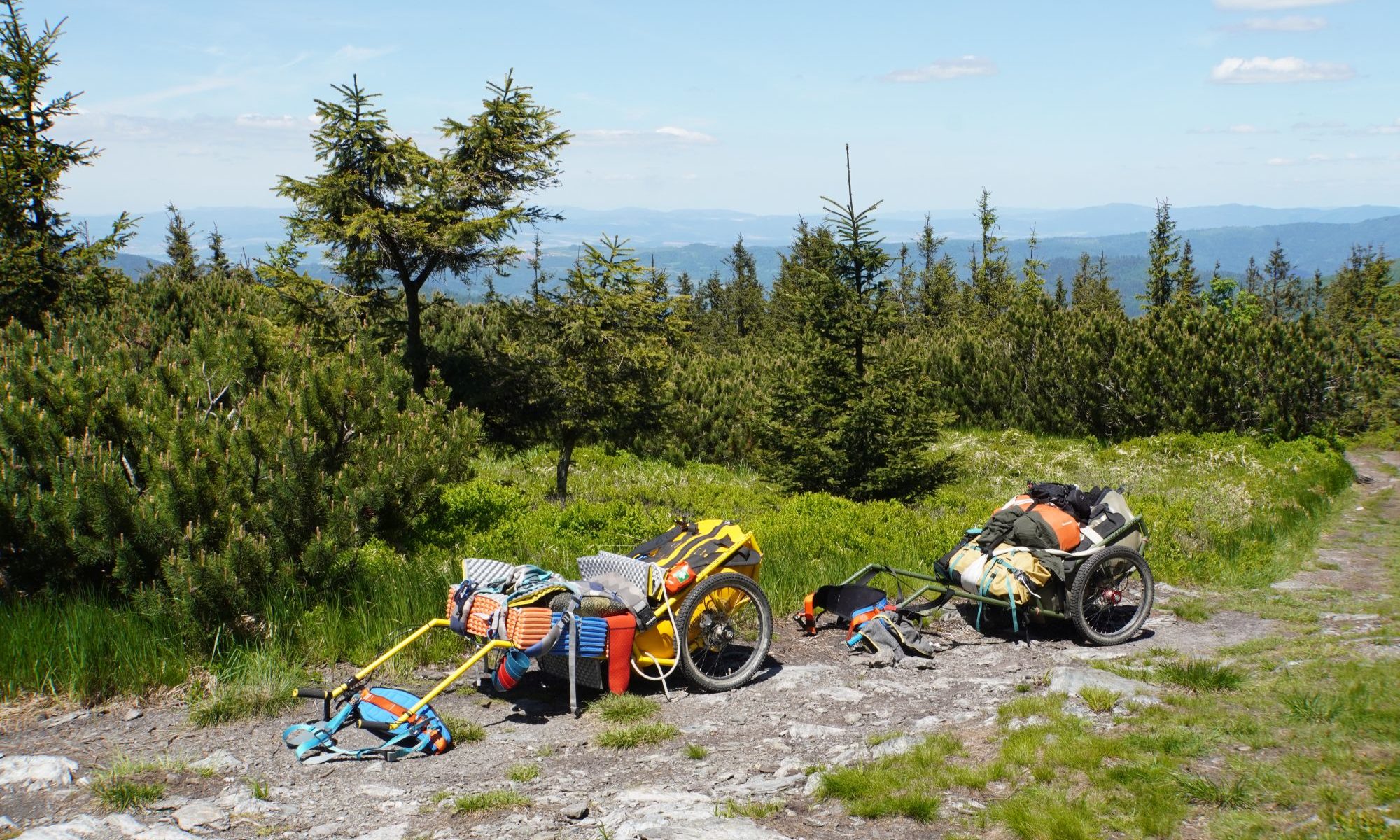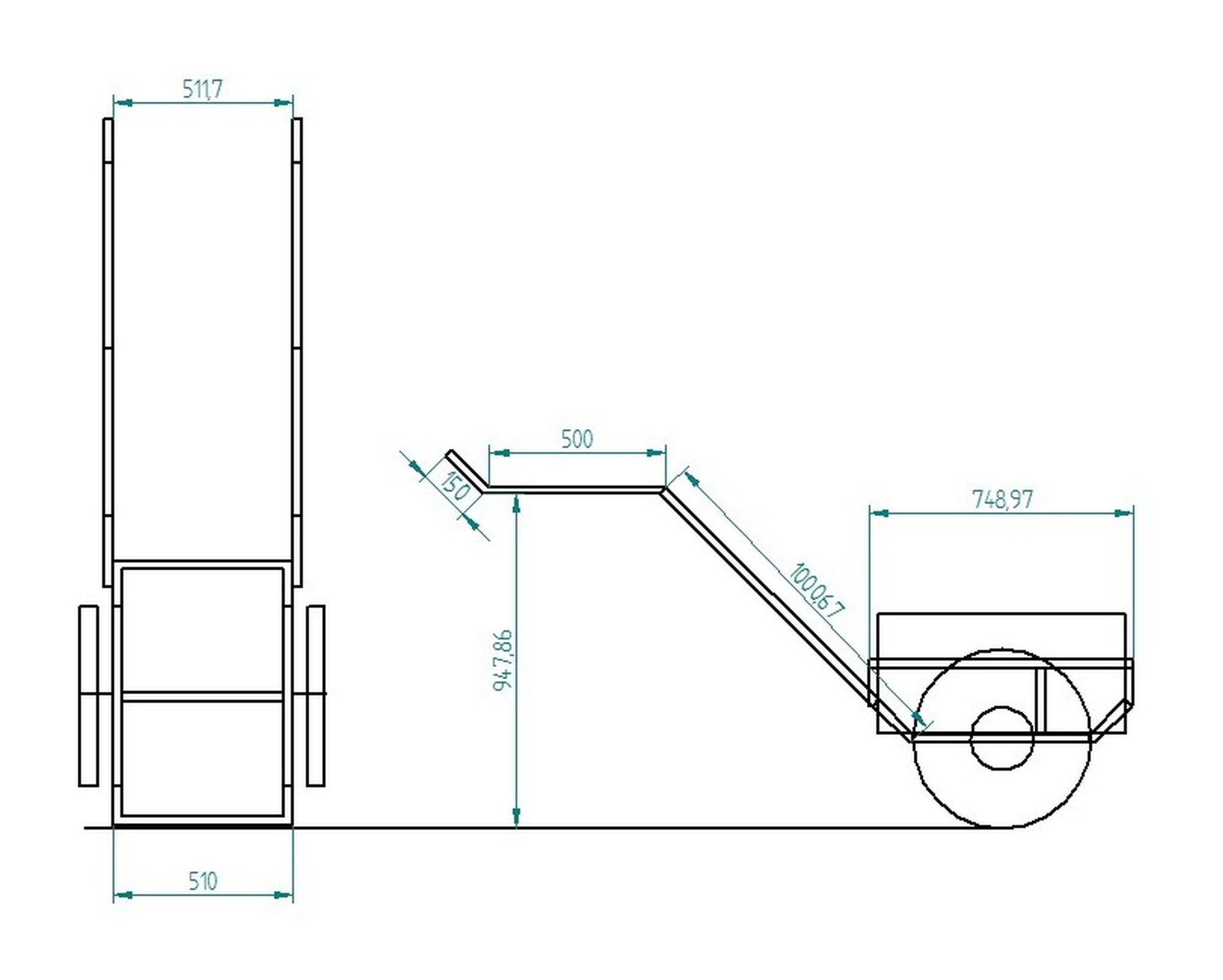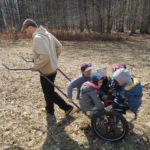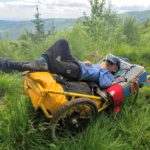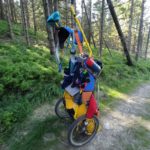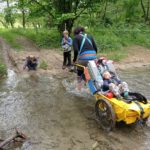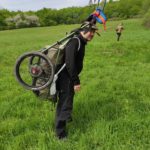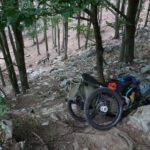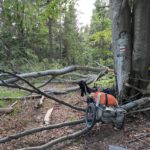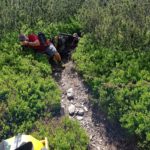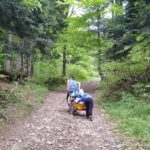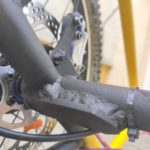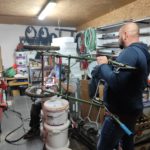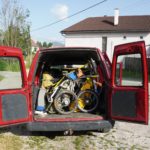When we decided we want to walk the 800 km long SNP thru-hike with three small children (6y, 4y, 2y), it was clear to us that it could not be done with backpacks on our backs. The youngest Stanko wouldn’t walk much and woulnd need to sleep, and overall we had too much stuff to carry. Since we had previously traveled a lot by bicycle with children, we had experience with a bicycle trailer, and naturally we thought that we could pull a traile behind us even up the mountains. We were surprised that there aren’t many hiking trailers out there and none of them fully suited us (small wheels, the impossibility to takie child, part of the weight of the load is still on one’s shoulders, the price…). An ordinary cart or a wheelbarrow didn’t suit either, so we finally decided to design and build a trailer exactly according to our ideas.
More information about the trailers further in the article…
Cart requirements:
- child can sleep on it
- sufficient carrying capacity and cargo volume
- things packed waterproof
- brakes
- great off-road ability and durability
- repairability
- foldable
- carryable on the back
- (the dimensions in the picture are not absolutely right probably)
- 20″ wheels with 20mm axles
- construction of thin-walled steel tubes (25mm diameter, 1mm wall)
- waterproof backpack ORTLIEB Duffle 110 l
- disc brakes (one cart has a mechanical ones controlled by one lever, the other cart has two hydraulic)
- detachable handles
Features:
- Evka’s trailer had a backrest made of sleeping mats so that Stanko could comfortably sit and sleep on it (Kolomanko also usually took a nap once a day).
- We took more children on them on better roads – when Kolko sat next to Stanko, the cart was better balanced and Evka had almost no weight on her shoulders. We also took Janko on normal roads so that it would be safer and he wouldn’t run on the road.
- We had the handles attached with carabiners to a waist belt (a regular 20€ work waist belt bought onlne) to which we had attached a climbing chest harness loosened to the maximum – it served as shoulder straps (thanks to this attachment, we did not have to hold the trailer with our hands all the time ).
- We attached strings between the handles on which we dried laundry
- The brakes worked great and even made it easier for a person to walk down the hill, since the trailer was braking him. The trailer can also be turned with two brakes.
- The trailer can be stand up for better storage.
Defects and fixes:
- squealing brakes (replaced discs and pads)
- 3x welding
- a broken wheel when crossing an inclined traverse (welded in the nearest village)
- wheel reinforcement (welded triangles for wheel/brake mounts)
- broken wheels (three) in the Low Tatras – torn tubes (reinforced with plates welded to the bottom of the cart in BB)
- 1x flat tire
- bleeding and refilling the oil in the hydraulic brakes under Kráľová Hola
- bent handle when Evka’s trailer with Stanko turned over on and she tried to save it (nothing happened to Stanko)
Disadvantages:
- The resulting width is approx. 81cm, which is a problem with a 80cm doors
- cannot be carried on the back – or we haven’t figured it out yet. The weight is too low and far from the back and the cart is difficult to put on the back
- it cannot be used to hike over large rocks – it must be carried by two people
Possible improvements:
- functional carrying on the back
- width 79cm
- combining two carts into a “car” that could be driven down the hill
Plans for the future:
We took one trailer to our cabin to carry heavy things, and maybe we will use one cart sometimes for a smaller trip, but we are not planning a similar trip as our SNP trip. If anyone would like to try them, we will be happy to lend them to you! :)
